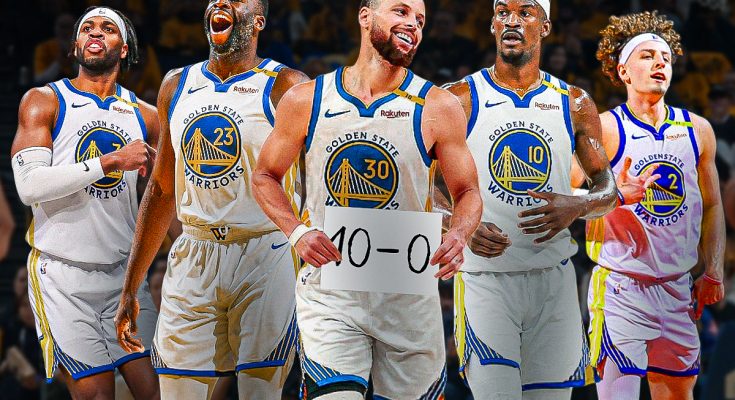The Golden State Warriors enter the new NBA season with heightened anticipation and pressure, and their opening stretch of 10 games is already being discussed as a barometer for what this team can accomplish. The franchise that once dominated the league with an unstoppable combination of shooting, ball movement, and relentless defense now finds itself at a critical juncture. Their championship core is aging, their roster is being tested by injuries and new additions, and their rivals in the Western Conference have only gotten stronger. For the Warriors, these first ten games are more than just the start of another long season; they represent a proving ground where depth, chemistry, and resilience will either shine through or reveal cracks that could linger for months.
The Warriors’ schedule makers did them no favors. Their opening 10 games include a mix of tough road trips, nationally televised matchups, and battles against both established contenders and hungry up-and-coming teams. In past seasons, Golden State could afford to use October and November as a time to iron out rotations and experiment with lineups, knowing that the sheer brilliance of Stephen Curry, the defensive genius of Draymond Green, and the scoring punch of Klay Thompson would be enough to carry them until the postseason picture sharpened. But things are different now. The margin for error is slimmer, the Western Conference standings are brutally competitive, and the Warriors can no longer assume that a slow start will be erased later by a magical winning streak.
Stephen Curry remains the heartbeat of the team, but the challenge for Golden State is how much he will be asked to carry right out of the gate. Curry is entering another season at age 37, and while he continues to defy the usual decline associated with players in their late thirties, the organization knows they cannot afford to run him into the ground during the first few weeks. That means the supporting cast will have to rise to the occasion, especially in games where opponents throw double teams and aggressive traps at Curry to force someone else to beat them. Jonathan Kuminga, Moses Moody, and Brandin Podziemski are no longer considered “developing” players; they are integral pieces who must prove they can be consistent contributors from the very beginning. How they respond in those first 10 games could determine how Steve Kerr structures his rotations going forward.
Draymond Green’s leadership will also be under a microscope. He sets the defensive tone for the Warriors, but his availability has been a question mark due to both injuries and suspensions in recent years. If he can bring stability on that end of the floor during this early stretch, the Warriors will have a chance to hang with the elite offenses they are scheduled to face. However, the real test lies in how Golden State fills in the gaps when Draymond sits. Kevon Looney has long been the reliable workhorse who does the dirty work, but he is also carrying miles of wear from deep playoff runs and heavy minutes guarding bigger centers. The coaching staff will likely turn to young players and newcomers to shoulder some of those responsibilities, and how well they respond in high-pressure situations will go a long way toward defining the Warriors’ defensive identity.
The chemistry of the team is another fascinating storyline. Golden State has built a reputation on unselfish basketball, quick ball movement, and spacing that leaves opponents scrambling. But the last couple of seasons have shown cracks in that identity, as turnovers, forced shots, and stalled possessions plagued them in key stretches. The first ten games will reveal whether this group can rediscover that beautiful brand of basketball or whether the offense will once again rely too heavily on Curry’s heroics. Steve Kerr has emphasized the need for trust, rhythm, and shared responsibility, but those ideals must translate into real execution on the floor, especially against opponents that thrive on exposing weaknesses.
Among those opening ten games are clashes with Western Conference heavyweights that could easily feel like playoff previews. Facing the likes of the Denver Nuggets, Phoenix Suns, and Los Angeles Lakers early in the season puts the Warriors in the position of having to prove they can hang with the very best right away. Denver remains the standard in the West, with Nikola Jokic orchestrating an offense that demands defensive precision from every opponent. Phoenix has reloaded with scoring firepower and versatility, while the Lakers remain a physically imposing team that can wear down opponents. A poor showing in those games would not only hurt the Warriors in the standings but also raise questions about whether they can truly contend this year. On the flip side, stealing wins against those teams could give Golden State a major psychological boost and signal to the league that they are still very much a threat.
The road games sprinkled throughout the first ten matchups add another layer of difficulty. Winning on the road has become an issue for the Warriors in recent years. What was once a hallmark of their dominance—the ability to silence hostile crowds with quick scoring runs and relentless pace—has become a weakness. Last season, Golden State posted one of the worst road records among playoff-caliber teams, and that trend cannot continue if they want to stay competitive. These first 10 games include several away contests that will test whether the team has made the necessary adjustments in focus, composure, and execution outside of the Chase Center.
One of the biggest X-factors during this stretch is Klay Thompson. His shooting remains one of the most feared weapons in the league, but inconsistency has crept into his game since his injuries. The Warriors need him to find rhythm early, both to take pressure off Curry and to force defenses to spread themselves thin. When Thompson is locked in, the Warriors’ offense becomes nearly unguardable, opening lanes for cutters and slashing guards while stretching defenses beyond their breaking point. But if he struggles with shot selection or defensive assignments, Golden State could quickly find themselves behind in games they cannot afford to drop. The first ten games will be telling in terms of whether Thompson can recapture the form that once made him one of the league’s most lethal two-way players.
Beyond the established stars, depth will be tested like never before. The Warriors’ bench has often been a point of contention, with critics noting that it has not consistently delivered in recent years. That problem is magnified when considering the brutal pace of the early schedule. Relying on Curry and Green to play heavy minutes in October is not sustainable. Role players must embrace their responsibilities and provide energy, defense, and scoring in spurts that keep the Warriors competitive when the starters rest. Players like Gary Payton II, Dario Šarić, and others will have opportunities to prove their worth in those opening games. If they succeed, Kerr will have the confidence to deploy deeper rotations later in the season, which will be critical for long-term health and playoff readiness.
There is also the question of identity. The Warriors have long prided themselves on being innovators, the team that changed basketball with their pace-and-space philosophy, relentless ball movement, and three-point barrage. But the league has caught up. Every contender now shoots threes, spaces the floor, and emphasizes versatility. To stand out again, Golden State must rediscover what makes them unique. That means not just leaning on the past formula but evolving it. Can Kuminga become the two-way force that adds an athletic dynamic they previously lacked? Can Podziemski’s playmaking inject new creativity into the second unit? Can Moody finally carve out a consistent role as a reliable scorer and defender? The first ten games will offer early clues.
The mental aspect cannot be overlooked either. A tough 3-7 start could send the fan base into panic mode and put enormous pressure on the front office to consider roster changes. Conversely, a 7-3 or 8-2 start would quiet doubts and set the tone for a season where the Warriors reassert themselves among the elite. For veterans like Curry and Green, staying even-keeled is nothing new, but younger players may find it more challenging to navigate the emotional swings of early-season basketball. Kerr’s job is not just to draw up X’s and O’s but to maintain the mental resilience of a team that knows every game in the West matters.
When considering the long view, the first ten games may not determine the Warriors’ ultimate fate, but they will set the tone. They are a stress test for depth, a spotlight on chemistry, and a preview of how this team stacks up against the toughest competition. In a season where windows are closing and opportunities are scarce, Golden State cannot afford to stumble out of the gate. They need focus, execution, and contributions from everyone, not just their stars.
Ultimately, the Warriors’ first ten games are a microcosm of their season-long challenge. They must balance the brilliance of their veterans with the growth of their young core, stay healthy while pushing through adversity, and rediscover the identity that made them champions. It will not be easy, and the opening stretch will likely produce both exhilarating wins and frustrating setbacks. But how they respond will say everything about whether Golden State still belongs in the conversation of true contenders or whether their dynasty days are firmly in the past. These ten games will not decide the championship, but they will decide how seriously the league takes them, and for a franchise that thrives on proving doubters wrong, that might be all the motivation they need.



